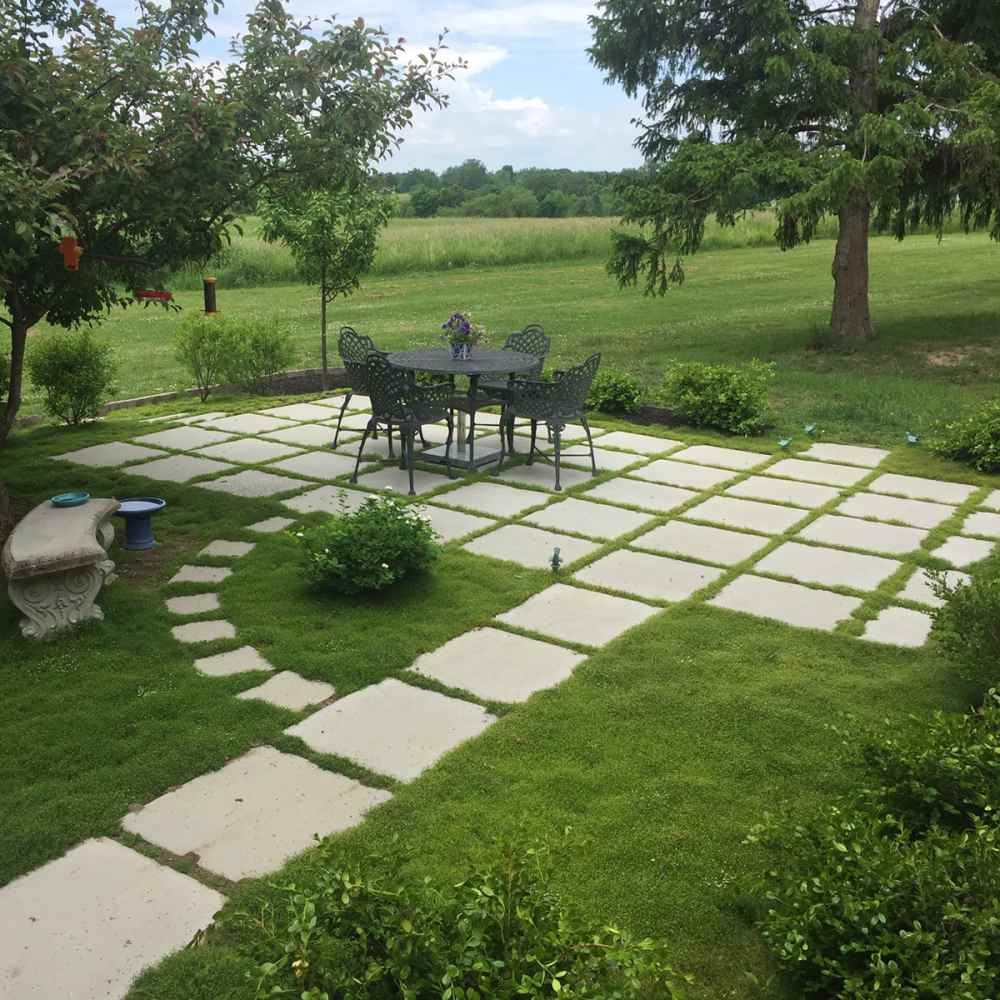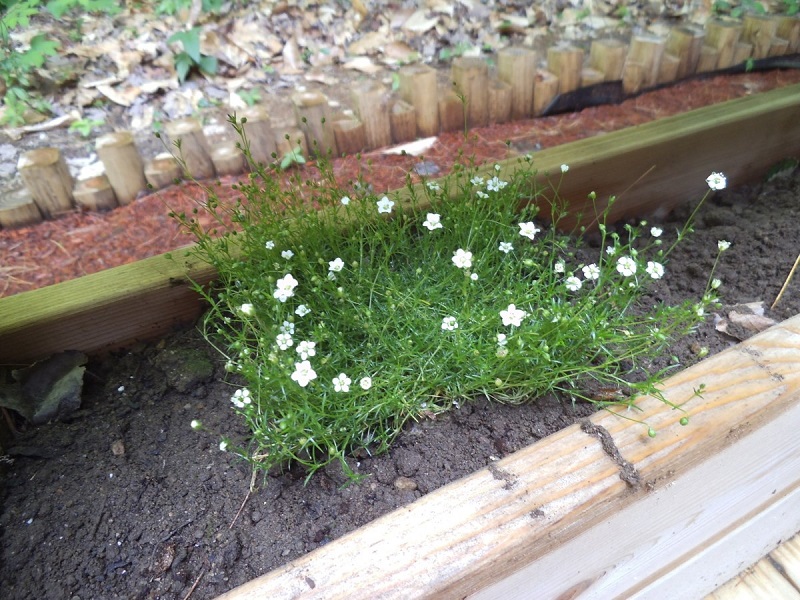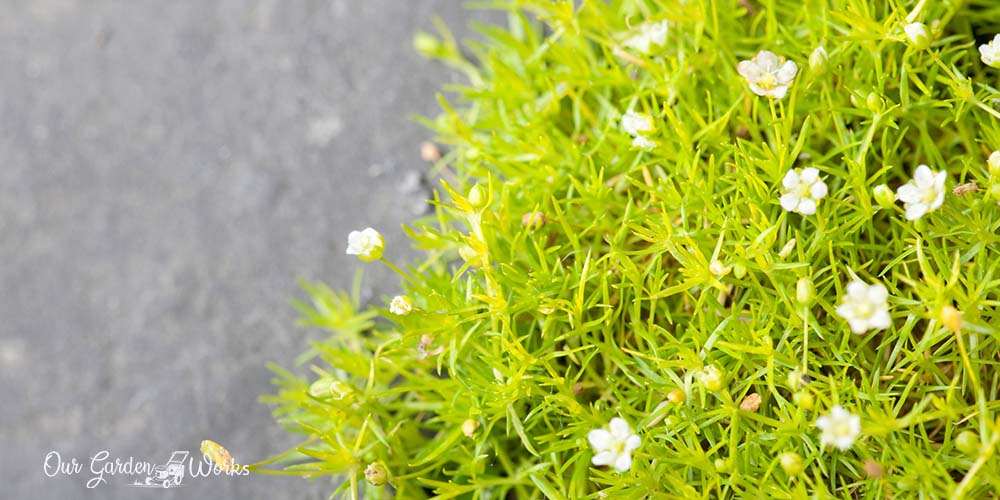Moss is becoming a popular trend in the landscape community because it’s low maintenance and resilient under different weather conditions.
Being lined up as moss, Irish moss is among the ideal options for home landscapes. It is favored by many because Irish moss care and propagation are easy, even the blackest thumb can grow it.
Behind its favorable growing requirements, Irish moss is quite an ambiguous name used for algae and mistaken for Scotch moss. Discover what is Irish moss and learn its difference from the other organisms associated with it.
Getting To Know Irish Moss
Irish moss or Sagina subulata is a perennial plant that belongs to the carnation or Caryophyllaceae family. It has the same features as moss but has entirely different growing requirements than the moisture-loving moss species. It is also called in other regions:
- Corsican pearlwort.
- Pearlwort.
Irish moss is often mistaken for Scotch moss. However, the two are different plant species. Scotch moss or Arenaria Verna has olive-yellow flowers while Irish moss has white ones. They both have the same growing behaviors that confuse novice gardeners.
Irish moss is a perennial plant which means it grows back every spring and overwinters during the cold months. It turns brown when the temperature drops and turns green when it is warm. With that, it is considered evergreen in warm regions.
Growers consider Irish moss as lawn grass because it is low-growing wherein its stems crawl in the ground. Its maximum height is 1 to 2 inches and spreads up to 12 inches or one foot wide. Simply put, it does not need mowing and excessive maintenance compared to grass.
Irish moss is also disease-free and not a favorite snack of pests, except slugs. It is also self-sowing which means seeding is no longer a part of your chore every spring. You will only worry about watering and fertilizing it throughout the growing season.
The only catch is it is slow-growing and takes a lot of time before it can take over hectares of lawn. The best way to use it is as a groundcover on the edges of plant beds, pathways, or in between pavers since it can handle light footfall or foot traffic.

Irish Moss Care Tips and Propagation
Irish moss can be planted from seed or transplant. It looks like a moss which makes its growing requirements a little different than a typical plant.
Here are the Irish moss care basics to guide you this growing season:
Growing Requirements of Irish Moss
Unlike moss, perennial Irish moss hates the hot sun and wet feet. It prefers a subtle amount of light and damp soil. Its other growing requirements are as follows:
Soil Quality
Irish moss is not fuzzy when it comes to its soil because it grows in neutral and acidic soil. The ideal soil pH for Irish moss is 5.6 to 7.5. and its only requirement is a well-draining soil.
Moss thrives in excessive moisture but Irish moss is not a fan of it. Its ideal soil consistency can be sandy, loamy, or chalky. When preparing the soil for transplanting Irish moss, mix a few cups of a compost to help the new plants withstand temperature stress.
In most cases, Irish moss can survive in poor and nutrient-deficient soil as long as they are already established. Its seedlings, however, do not have the resistance to environmental stress.
Temperature or Climate
The ideal areas to grow and propagate Irish moss are USDA hardiness zones 4 to 7. It cannot tolerate extremely hot and dry summers in warm regions because its small leaves will lose moisture and turn brown in scorching hot climates.
When the hot summers pass, Irish moss will revert to its deep green color in fall. It is cold-hardy and can overwinter under the thick ice. Gardeners apply a bed of mulch over Irish moss for insulation to help it recover faster in spring.
Indoor Irish moss is not acclimated to outdoor temperatures during winter. Help it gradually adapt to the cold temperature by keeping it in a garage, silo, or wrapping it up with insulators to avoid plant shock and frost injury.
Sun Exposure
Irish moss can tolerate a limited time under full sun and the rest of the day in partial shade. Irish moss poorly performs in shade and develops leggy and dull stems and leaves.
Place Irish moss in areas where it can get an hour under full early morning sun and partial shade for at least six hours or throughout the day.
Watering
When it comes to watering, Irish moss is in the middle of the spectrum. It is not drought tolerant and does not like wet feet. Frequent but light watering is enough for these low-lying plants.
Fertilization
Well-balanced liquid or slow-release fertilizer should be given to Irish moss every year. The additional nutrients in the soil will help them grow to their maximum height and spread to their maximum width.
As much as possible, do not add too much nitrogen to Irish moss. It will cause a growth spurt in stems and leaves which will cause the whole plant to turn into a mound instead of covering the ground.

Maintenance and Propagation
Irish moss care and upkeep start from keeping it neat and clean. Remove dried stems or trim excessive leaves to make them look uniform and tidy. Before the first frost, spread a thick layer of mulch over Irish moss to protect it from frost damage.
Propagating Irish moss is as easy as cutting propagation. The only difference is you are dealing with tiny stems and roots.
If you have bushy and out-of-control Irish moss in the garden, spread it across your lawn by dividing them into several cuttings or plugs.
Here’s how to divide Irish moss:
- Divide a clump of Irish moss in early spring to give it enough time to harden throughout the growing season. Start by unearthing the plant from the soil using a shovel or a trowel.
- Separate parts of the clump or plugs. Make sure that every plug has roots in it.
- Plant the new plugs in separate locations or pots.
How To Plant Irish Moss?
The two ways of growing Irish moss are as follows:
From Seed
Start germinating the Irish moss seeds indoors during the last weeks of winter. Doing so will allow you to plant them in spring. The best pot to use is a box where the stems can spread freely.
Poke the soil in the planter with a stick and sow the seeds. Do not cover the seeds with soil because they need the radiation from the sun or grow light to germinate. The typical germination time of Irish moss is two to three weeks.
Once the seeds sprout, give them another week or two to harden before transplanting outdoors.
From Transplant
Transplants or plugs of Irish moss are easier to grow because they are already established and can produce seeds faster than those grown from seeds.
Space the plugs one foot away from each other on the ground. Make sure the soil is added with compost and other organic materials and well-draining. Water them accordingly and fertilize them every growing season.
Irish moss produces seeds that go into the soil to grow into new plants. Therefore, you no longer need to plant another batch to fill a plant bed or area. Irish moss will do it for you.
Tips For Growing Irish Moss
Here are some things to remember when growing Irish moss:
- Irish moss doesn’t do well in shade. So, make sure that you don’t grow them under trees or in dark corners of your yard.
- It takes a long time for Irish moss to cover a whole area. The best technique to fill the whole area is to plant multiple plugs in your garden for better results.
- It’s easier to grow Irish moss from plugs than seeds. The plugs will generate new stems that will give the greenery in your garden in no time. Seeds take almost three weeks to germinate and another two weeks to establish themselves in the ground. Unless you have a lot of patience to wait, why waste time if you can grow from plugs.
Myths and Misconceptions About Irish Moss
The misleading name of Irish moss is the root cause of the misconceptions about it. It is often mistaken for a real moss. In some cases, it is also mistaken for the red algae that bear the same name.
Irish moss is a tiny perennial plant that mimics the appearance and spread of moss. However, they stand out in the garden for their small flowers. During the peak of its growth, a field of Irish moss flowers looks like a meadow where the leaves feel soft to the feet and the green and white colors are pleasing to the eyes.
Irish moss is also mistaken for the red algae that grow in bodies of water. They have the same name but are different plant species. Irish moss or sea moss is a branching seaweed that is consumed as a food or food supplement for its medicinal benefits to humans.
Different Ways To Use Irish Moss At Home
Since Irish moss resembles a real moss, it can serve as a substitute for lawn or moss itself. Here are some creative ideas where you can use it other than grass substitute in lawns:

Live Moss Wall
Live moss walls became a trend due to their ability to enhance the ambiance of interiors and reduce stress in workplaces. Instead of real moss, you may use small batches of Irish moss in designing a moss wall for your home.
Water Garden Plant
Water gardens often have an aged theme where the rocks are covered with moss, resembling the untouched nature in a real forest setting. Irish moss can cover the edges of the stones or the soil around the water feature and serve as a carpet of greenery.
Moss garden
Moss gardens showcase the different kinds of moss in a pot or terrarium. The plants added to them are not limited to moss species but also moss-like plants like Irish moss and other air plants. Create a stunning piece of moss garden art with the help of Irish moss. Who knows you might discover a new hobby out of it.
Frequently Asked Questions (FAQs)
Can Irish moss be in full sun?
Yes. Irish moss can grow in full sun as long as it will not exceed an hour a day. Irish moss cannot tolerate heat and develops brown patches when exposed to direct sun for prolonged hours.
Is Irish moss low maintenance?
Yes. Irish moss is disease-free, pest-resistant, does not need mowing, can grow in poor soil, and self-sows its seeds.
Can Irish moss be grown indoors?
Yes, you can grow Irish moss indoors because it only needs partial light and frequent watering to survive. Some gardeners germinate their seeds indoors before they transplant them outdoors in spring.
Final Thoughts
We hope that this post helped you discover the beautiful qualities of Irish moss. This humble perennial plant is underrated for its qualities.
Imagine a garden filled with greenery and blooms of Irish moss without spending a ton on gardening tools and materials. Isn’t that any gardener’s dream?
If you find this post helpful, please share it with your friends and help them discover a low-maintenance plant that will make their neighbors look at their yard in awe of its beauty.
Also, please share your experience in using Irish moss as a lawn substitute. How much have you saved since using Irish moss over grass?
